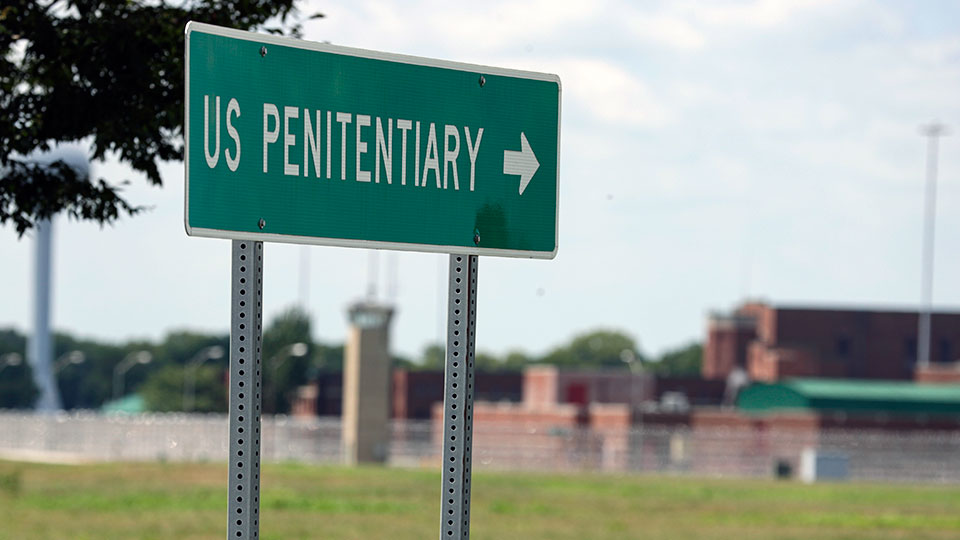
The COVID-19 pandemic is far from over for those who are incarcerated. The coronavirus mortality rate in prisons is more than double that of the general population of the United States.
The increase in death may continue to escalate as both the state and federal corrections departments fail to implement policies to alleviate the unsafe conditions. According to Prison Policy Institute, more than 40 states have no plan in place to provide necessary booster shots to the incarcerated. Those behind bars are further endangered by the fact that less than half of prison staff are vaccinated in most states.
“To reduce harm inflicted to inmates, we must pivot from measures using incarceration,” urged Callie Simon of the Indiana Young Communist League in a conversation with People’s World. In 2021, the American Public Health Association urgently called for reduction of the incarcerated population, divesting from carceral systems, and investing in the societal determinants of health.
Social distancing, effective isolation, and quarantine are impossible in overcrowded facilities. Failure to significantly decrease prison populations threatens the health and safety of incarcerated people, Simon told People’s World. Local, state, and federal officials continue to ignore scientists and advocates as they refuse to release inmates or provide adequate health services, she continued, stating that the safety measures implemented thus far have failed to mitigate the risk of COVID-19 to vulnerable inmates. “What is happening inside prisons in the United States violates the 8th Amendment, which prohibits the use of cruel and unusual punishment.”
In 2020, U.S. prison deaths increased by 46%, according to the Bureau of Justice Statistics. In 2019 nearly 4,200 inmates died, the leading cause being illness. That number rose to over 6,100 deaths in 2020, even though the U.S. prison population dropped by almost 10% in that period. Taking into account overall population change, the mortality rate has increased by 61%.
The decrease in prison populations is largely due to the 2020 lockdowns, and COVID-19 slowing down admissions, although 12 states did increase the number of releases from prison. Overall “crime” fell by 23% during the first month of lockdowns and has remained lower than the five-year average since.
The majority of states fail to report crucial COVID-19 related information. There are five metrics that states should be tracking: cumulative case counts, active cases, cumulative deaths, vaccination progress, and testing counts. But only three states publish sufficient data on all of these metrics. All other states with available COVID-19 information are only publishing some of this data.
Promoting medical parole, preventing incarceration for technical violations during electronic monitoring, or facilitating or accelerating releases for the incarcerated on minor offenses could reduce prison populations, says Simon, but more than 13 states have failed to implement any such policies.
Instead, GOP legislators in states including Indiana and Wisconsin have proposed bills to strengthen cash bail, increasing the potential harm to the indigent. Under cash bail systems in the U.S., those who have not been convicted of a crime are kept behind bars if they are unable to pay for their freedom.
“Cash bail disproportionately affects poor working-class communities, especially those of color,” according to Simon. “No one should sit in jail for being poor,” Simon continued, stating that pre-trial commitment has been proven to increase recidivism.
“To mitigate death and mass infections, a significant decrease in incarceration is needed immediately,” Asha Ramachandran of the New York Young Communist League, told People’s World. Ramachandran is chair of the YCL’s Prison Abolition Subcommittee.
“Yet rather than use leftover COVID-19 relief funds to invest in our communities, thus preventing further crime, we are seeing massive increases to policing and prison budgets across the country,” she continued. In July 2021, the Biden administration encouraged state and local government officials to use their American Rescue Plan Act (ARPA) funds to improve public safety; in cities like Noblesville, Ind., that came in the form of cash bonuses of $2,000 to police officers, Ramachandran pointed out.
“Working people desperately require investment in the education, health, and safety of our communities, as well as an end to the profiteering of criminalization and the imprisonment of the working-class,” according to Ramachandran. “The accumulation of capital and the violence rendered at the hands of the state are far greater threats to our communities than we face from low level-crime.”
A different approach to public safety is advocated by Eric Brooks, chair of the Communist Party USA’s Indiana District. “Working people must grant themselves, through democratic struggle, power over the police and the prison industrial complex,” Brooks told People’s World. He cited the Empowering Communities for Public Safety campaign in Chicago, spearheaded by the National Alliance Against Racist and Political Repression, as one example of where this is being implemented.
“Until workers upend the system where the police control the communities and the communities have no control over the police, the inhumane and tragic police murders, brutal incarcerations, and use of prisons for slave labor will continue,” said Brooks.
Those interested in working with the Young Communist League or the Communist Party on this struggle can contact info@indianacpusa.org.










